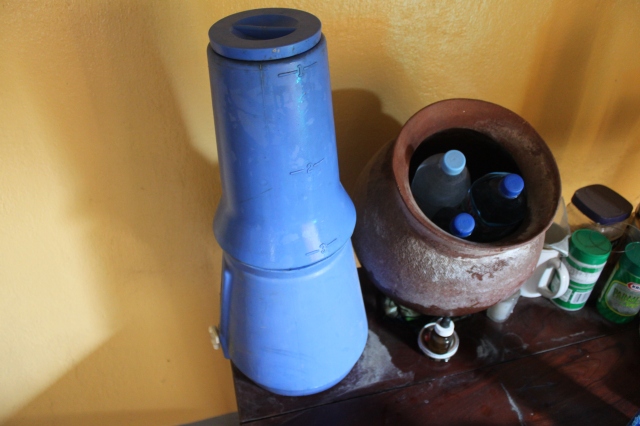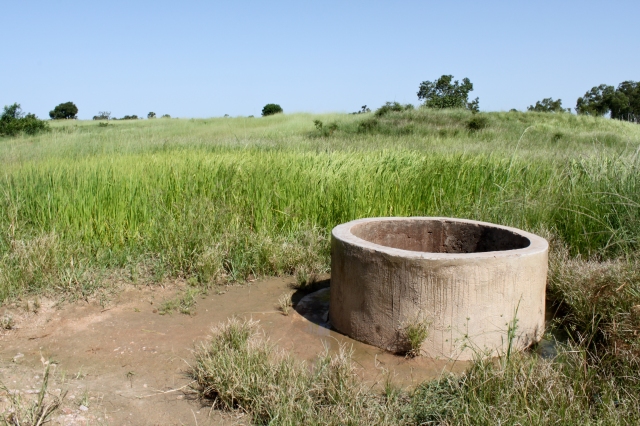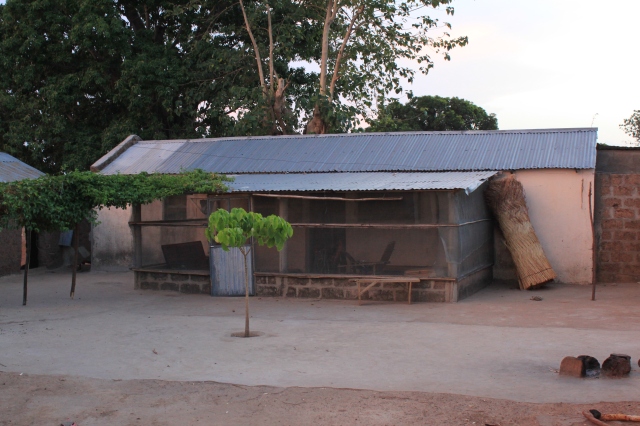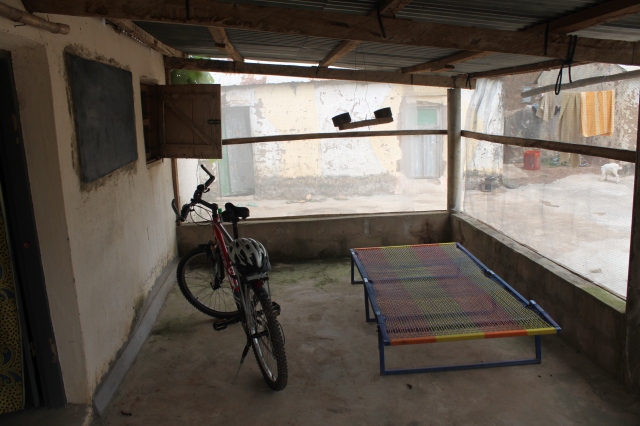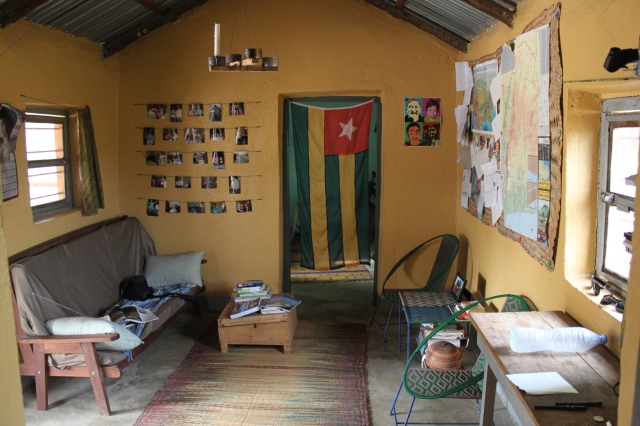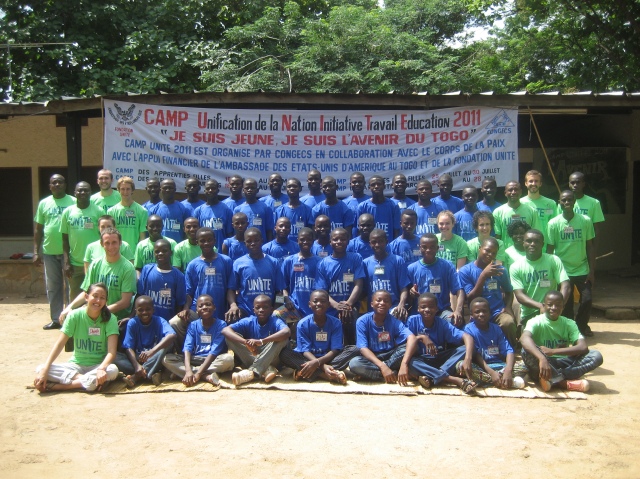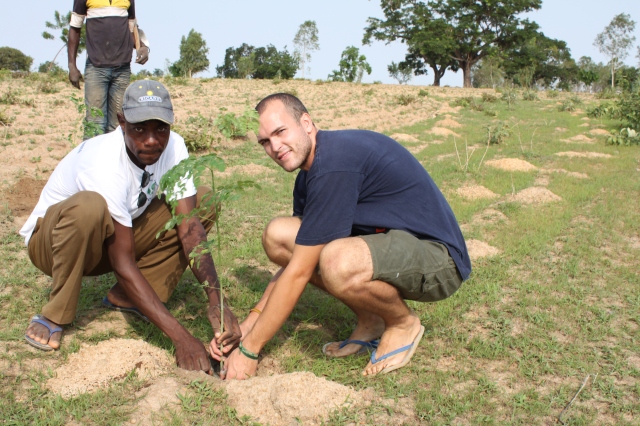In this time of financial meltdowns, budget crunching, and fiscal austerity, seemingly every government, business, man and woman throughout the world, have felt the repercussions of our current economic climate. The saddest part of our governments current budget tightening, is that most of the casualties through budget cuts are to social programs. I am not going to pass judgment as to whether or not certain programs deserved cuts or not because I am not knowledgeable enough with most of them. However, there is one program that has seen substantial cuts that has greatly affected me and many others, that being the Peace Corps. The following is my pitch to anyone in the U.S., as to why at the Peace Corps should never see cuts and why it is in the best interest of the country to have a strong, well-financed Peace Corps.
I think in the eyes of the American public, the majority of people have a romantic idea of the Peace Corps. They see it as a chance to explore the world, test personal endurance, become more globally aware, while at the same time helping those less fortunate than themselves. It is an incredible life changing adventure not only for those who volunteer and serve, but also for those in the countries being served. It is this romantic and mythic status that has elevated Peace Corps to a sacred place in the American identity, which led to its creation and continued financing.
Not everyone agrees with this romantic idea. Many of the proponents of Peace Corps see it as a gross waste of money because most of the countries being helped are of little importance to America and there are little results of development being shown. There is also this stereotype that Peace Corps serves a liberal agenda and all of the volunteers are a bunch of “pot-smoking hippies”.
I would be lying if I said there are not any “hippies” in Peace Corps. Sure, it has its fair share, but the first and one of the best things about the Peace Corps is how diverse it is. It is not a homogeneous organization of vegan eating, Marx reading, tie-dye wearing people. It is comprised of every race, religion, sexual orientation, socioeconomic status, and political ideology. It has many recent college grads, to individuals with only a GED, to professionals who quit their jobs to get a new lease on life, to seniors who have already had a very full one. For me, the diversity of Peace Corps has been one of the best and most rewarding unseen benefits of being a volunteer. I am friends with people from all over the country (I know someone from Alaska now!). I have been introduced to many new ideas and ways of thinking. Working and being friends with others very different from me has eliminated stereotypes or prejudices I may have harbored. The Peace Corps is a microcosm of the diversity that exists in America today and it has been really refreshing to meet and be changed by so many different people. If at the very least, all Peace Corps did was bring a few Americans closer together, I would say it was worth every penny.
Peace Corps is classified as a development agency, so many people will rate it solely on its perceived success in this category. Many would say that Peace Corps fails as a development agency because it doesn’t have good “development numbers”. Most other aid agencies are fueled by these “numbers”— We built X amount of schools, X amount of hospitals, X amount of latrines, gave electricity to X amount of people…blah, blah, blah. These numbers supposedly say how well an organization is developing people and ultimately acts as their empirical evidence for continued financing. This is the problem with international development today. People think if you just throw money at the situation it is bound to improve, when in actuality, many of the third-world countries have seen very little improvement and in some cases, a degradation in the quality of life since the idea of international aid was created.
Many times, large aid agencies that come in and finance projects create bigger obstacles to development. They disenfranchise the communities they are trying to help and make them become dependent on aid. Why would a small village save money to try and build a new school when if they wait, eventually some western aid group will come and build one for them? Why would people change personal habits to stay healthy, when they know they can get free or reduced healthcare or medication costs? Why would a community fix a broken pump when a church in the U.S. is going to pay for its repairs? I experience this “free money” syndrome on a small scale every day, from the person assuming it is my job to buy them lunch, to the kids who think I own a million soccer balls just to give to them. I helped organize a girls soccer tournament that cost a few hundred dollars to put on that included referees, water to drink on the sidelines, transportation costs for the teams, food for those participating, not to mention fun for the participants, and they were ungrateful and insulted that we did not provide them with parting gifts for their hard work! The seemingly uninhibited flow of money into developing countries with no strings or expectations attached, is impeding development and killing the confidence of people’s self-determination.
That is why Peace Corps is so good and necessary in the realm of international aid. The model Peace Corps follows is completely grassroots based. Peace Corps volunteers act as facilitators, empowerers, and as a resource to help the communities they serve decide what they need and how to bring about positive change themselves. Peace Corps only encourages sustainable development that can succeed and continue even after a volunteer has left. This type of development is very empowering to the communities because they eventually can see that they have the power to change their situation. The only problem with this model is that it is hard to chart its effect because many times its development is not tangible and made out of concrete and steel, but is ideology and is in someone’s head. Another good thing about the Peace Corps Model that helps with development and positive change in communities that have a Peace Corps Volunteer, is that volunteers live at the same level and with the people they are trying to help. Many NGOs, government organizations, or missionaries live in the towns or cities with all of the amenities one could find and drive out to impoverished communities in their brand new cars to try and “develop” them. This fails on so many levels, but the Peace Corps method is very effective.
Because volunteers are required to stay in their respective communities for two years, volunteers are able to develop strong relationships, trust, and the respect of the people in their communities that allows them to better change people’s ideology. Because of this unique relationship they have with their community, they are able to see the problems and issues specific to that community, and possible local ways of fixing them, rather than placing a blanket development strategy on every place. Living with and near the same economic level of the community also ends the idea in communities that their volunteer is a handout.
It is a common misconception that Peace Corps is solely a development agency, when in actuality, two of its three goals are related to cultural exchange. The second goal is for Americans to better understand the country served and the third goal is for the people being served to have a better understanding of America and its people. So, theoretically Peace Corps is not even a development agency, since it is 2/3 dedicated to cultural understanding. Maybe it would be better to call it a cultural exchange with a focus on development, but we all know that would never be allowed to be financed by the U.S. Government.
It is interesting because I think this cultural interaction is actually the most important, rewarding, and beneficial part of Peace Corps, for volunteers, the people in the countries being served, and the most in some respects for the U.S. Government.
First, for the volunteers, the cultural part of the Peace Corps experience ends up being the best part of serving. You don’t look back at all of the trainings you did or the school you helped build. You remember the friends you made, the babies that were named after you, and the funerals you were invited to. You remember all of the bizarre things you ate, the language/s you learned, and the weird clothing you wore. You remember the bouts of diarrhea, the people with polio, babies with bloated bellies, and the corruption of the police. You ultimately remember that you were one of them. You discover that no matter your situation, where you are from, or where you are going to, people deep down are all the same and this realization will change your view of the world forever. This awakening helps volunteers compare America to the country they are serving in. Sometimes they see that America does really well in some respects, such as access to education, or very badly as in my experience, that America is failing poorly in its sense of community. This cultural experience enlightens the Americans serving, so that when they do eventually go home, they are much more aware and can be better citizens that improve America.
The second beneficiary of this cultural exchange are the host country nationals. One of the major things they get a kick out of is just talking with someone from a completely new and enchanting place. They get to share their culture and learn about America, which most of the time is dispelling rumors. Ultimately they see that Americans are not arrogant or think they are better than anyone else. They are not all brilliant or warmongers. They are people too, just like them. I can attest that this interaction has been one of my proudest achievements as a volunteer. Because of the repercussions of these interactions, I am proud to say I am an American. If you travel anywhere in Togo and someone finds out you are in Peace Corps or American, they only have good things to say. They like us, a lot. Then you will be told that they do not like the French or German volunteers because they are unwilling to eat at their houses for fear of getting sick or won’t come to a funeral or baptism. They like us because we respect them and do not treat them differently. We treat them as equals. I could live in my community for two years and build hundreds of wells and schools and if I did not partake in the cultural side and eat and drink with community members, they would not like or respect me. But, if I did zero work and just stayed and lived and experienced the culture, they would have nothing bad to say about me or be disappointed.
That leads me to the benefit of the U.S. Government from these cultural interactions. Peace Corps is basically the cheapest, most effective, positive PR that any government could dream of. Each volunteer is like a mini ambassador that makes everyone like America better. That is really hard to do seeing as many countries see the U.S. as an imperial bully. I am sure now that Togo is on the U.N. Security Council, the fact that Peace Corps has been in the country helping development for 50 years, is being extremely beneficial in helping to influence their votes. The benefit of positive global opinion of the U.S. is invaluable and I believe nothing is helping more with average global citizens than the Peace Corps.
My last argument as to why Peace Corps is really worth its funding is its economic impact. Before coming here I never thought of the infrastructure needed to have volunteers or the impact those volunteers would have by adding money to local economies, but it is substantial. Peace Corps Togo directly employs around 30 full-time Togolese staff members, probably another 40 part-time or temporary staff, and its indirect impact probably has provided jobs for people in the hundreds.
The greatest economic impact comes from the volunteers themselves. Each volunteer in Togo makes around $300 USD per month. There are around 100 volunteers in Togo, so that means about $30,000 USD is being added to the Togolese economy each month. It might not seem substantial, but the majority of this money is going to the most impoverished communities in the country, adding wealth to many closed economies that have no new sources of revenue to improve their economic conditions. If you look at it this way, Peace Corps is absolute direct foreign aid. It is not going into government coffers to enrich the elite of corrupt governments. There are no politics involved that dictate how the money is to be spent and what kind of benefits the donor is asking for. It is being given directly to peasant farmers, women with malnourished children, and to individuals who had to drop out of school because their family couldn’t afford it. This small boost to the economy has greatly ameliorated the quality of living for many people. One example is of a man in Dapaong who made egg sandwiches in a little stand on the side of the road. A few volunteers started frequenting his stand and within a couple of years, he made enough money to open a large restaurant that is now the hangout for the wealthy elites in town. He is so successful that he just opened a boutique that sells food and personal products. This is just one story out of countless so called rags to riches stories that are occurring everyday from the money that volunteers spend or loan to individuals. If people actually want to believe they are helping the poor in the world, then they should support the Peace Corps because there is no other government organization, NGO, or charity that is as efficient or direct at getting money to those who need it.
Now, the reason I wrote this article and was so impassioned by the subject was because we are feeling the impact of budget cuts here in Togo. This fiscal year the Peace Corps Togo budget was slashed by 20% with almost no warning. All of the staff have had to take pay freezes so that no one would lose their jobs. Many programs have been affected and they are phasing out one of the sectors that volunteers worked in. They are sending less and less volunteers to the country to replace old ones. They are going to stop giving bikes and eliminate the maintenance and parts needed for their upkeep to volunteers. This is one of the most important items Peace Corps has provided me because it allows me to travel to remote areas and is therapeutic for the often stressful days of Peace Corps service. The budget cuts are so bad, that two days during the work week in the Peace Corps Office in the capitol, they are not allowed to run air conditioning in a climate that is hotter and more humid than Florida! There are even quotas to how much one can print because printer cartridges cost so much, and this is supposed to be a full functioning government office!
Now I am not saying that Peace Corps is totally efficient or that it should be excluded from budgetary restructuring. What I am saying is that it’s a bit ridiculous that Peace Corps is getting such major reductions to its budget. The entire budget of the Peace Corps is about $200 million, or the same amount of money that the Department of Defense spends on the bands of the armed forces! That is crazy to think about. Cutting funding to Peace Corps does nothing to the overall financial problems of the government. A few million dollars is not going to substantially reduce the deficit or help the economy. So why cut its measly budget down even more? It was already underfunded and now it is barely able to function. I have no problem making budget cuts if they are necessary and make sense, but cutting Peace Corps funding at this time makes no sense. After all of the major benefits it provides at its cheap cost it seems just plain stupid. I think the real question we should all be asking is not whether the Peace Corps deserves financing and how much, but why the Army needs so many damn tubas.

